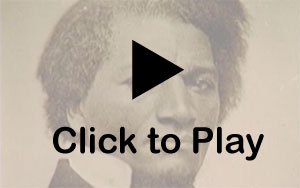Abolitionism

The revivalist fervor of the 1830s increased the momentum of a growing anti-slavery crusade. Opponents of slavery in the 1810s and 1820s supported a gradual emancipation of slaves, followed by a colonization effort that would facilitate the transport of the freedmen to Africa. Evangelicals influenced by the Second Great Awakening later embraced the radical position of immediate emancipation with no colonization. William Lloyd Garrison launched a newspaper, The Liberator, to promote the cause of abolitionism. Lectures, such as those given by escaped slave Frederick Douglass, further spread the abolitionists' message across the northern states.
![]() Video: Frederick Douglass
Video: Frederick Douglass
Click the image to watch Frederick Douglass
Internal divisions and a fear among white workers of competition from freed slaves limited the abolitionists' popularity. Despite their limited political success, abolitionists established a network, called the Underground Railroad, to help slaves escape from the South to freedom in Canada. One of the Railroad's most effective conductors was Harriet Tubman.
![]() WebQuest: Underground Railroad
WebQuest: Underground Railroad
 |
The following link presents an historical overview of the Underground Railroad. The “Related Entries” links on that page provide more information and documents about the Railroad. |
Use the information on the web pages and in your textbook to answer the questions on this worksheet.
Submit your completed WebQuest to the WebQuest: Underground Railroad assignment link. For information on how this assignment will be graded, please visit the orientation.
